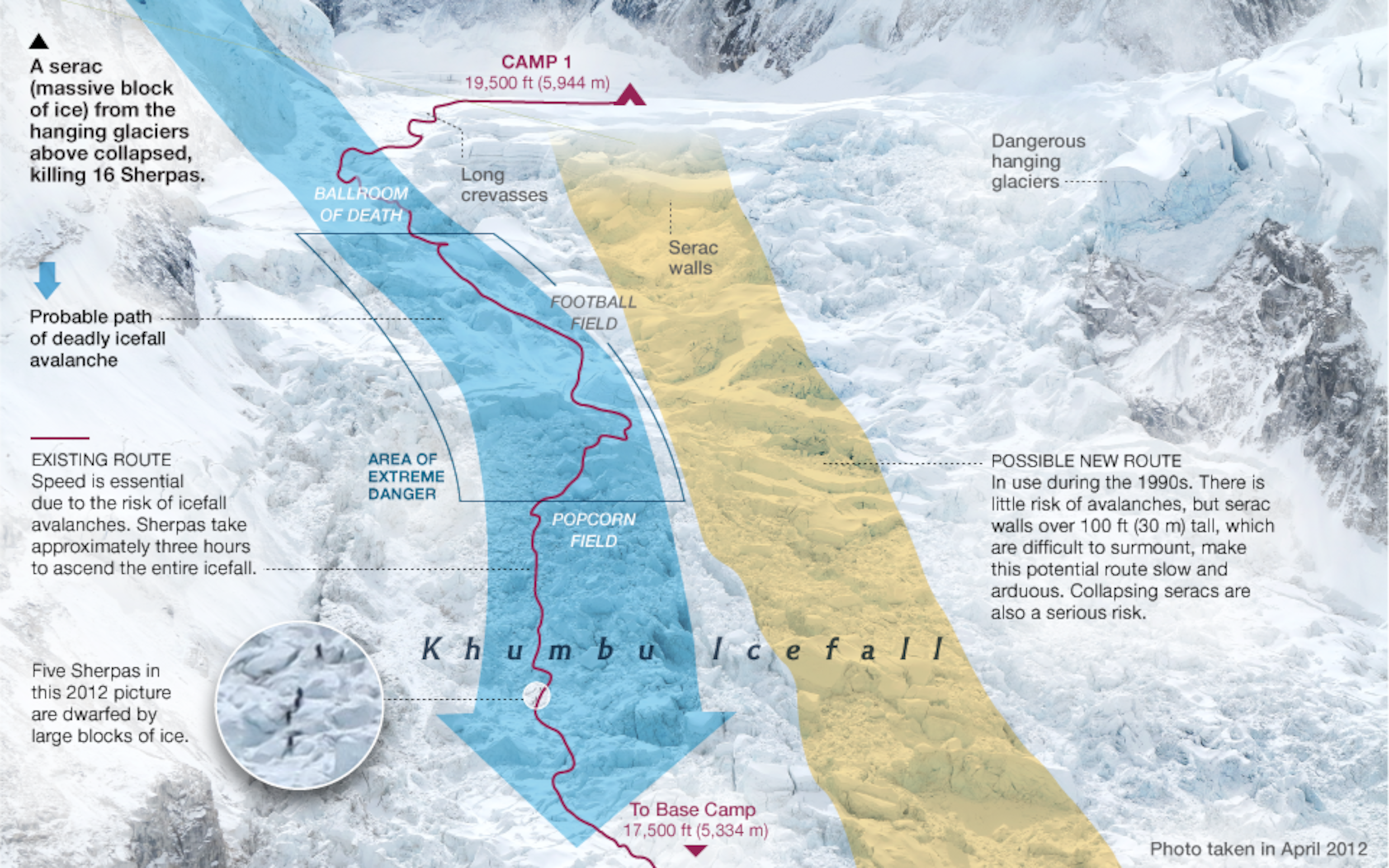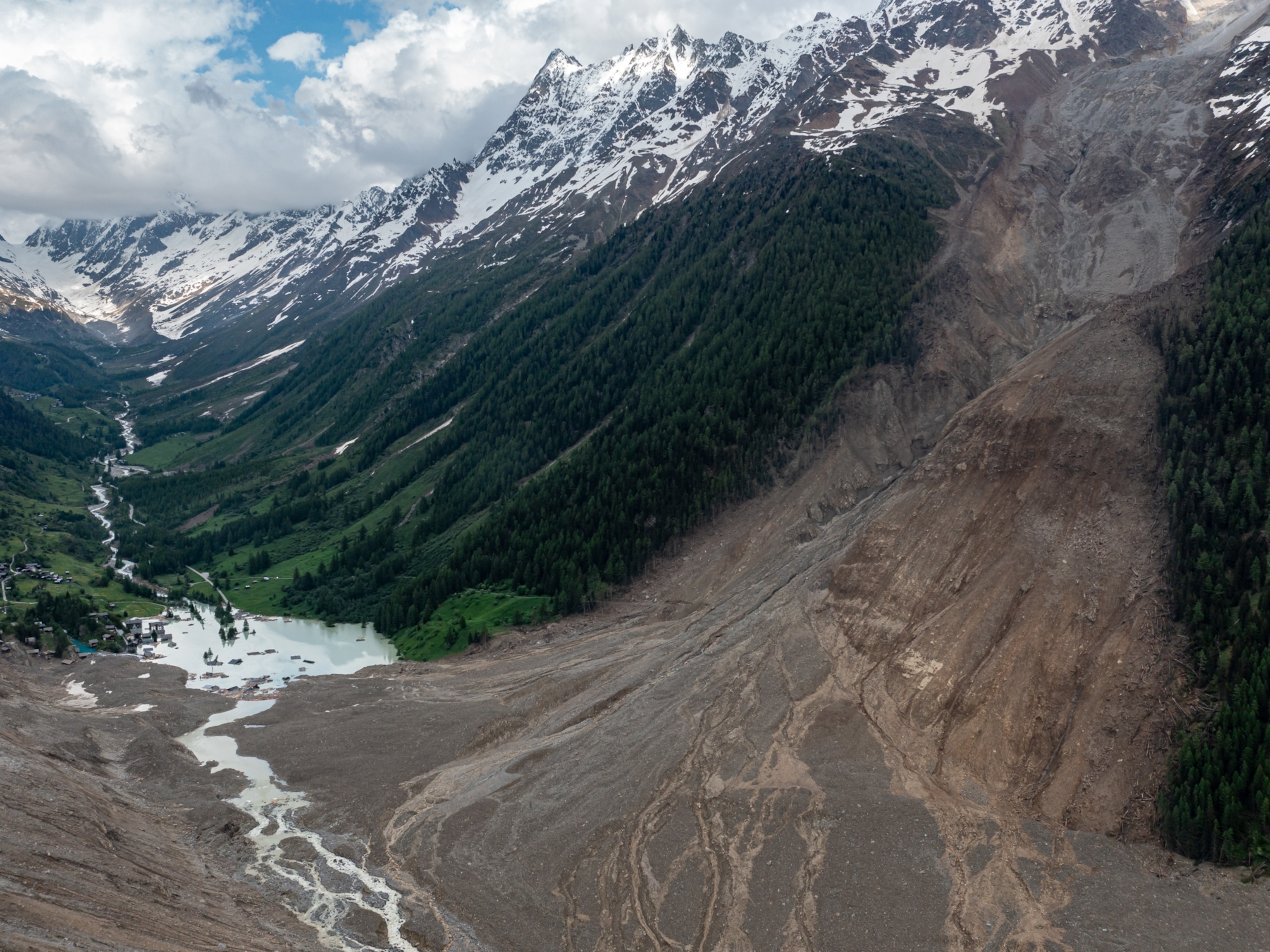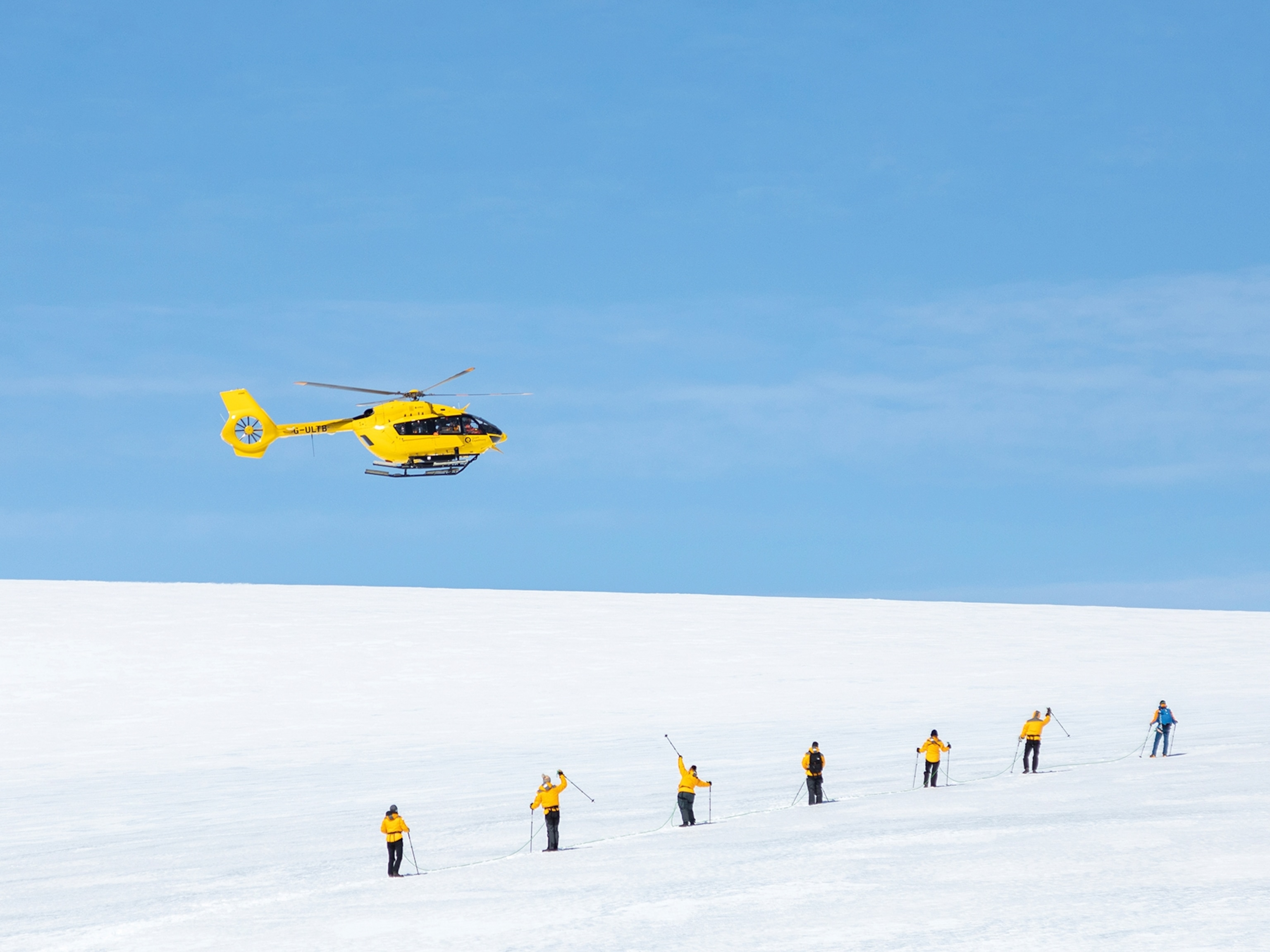
Climbers Continue Up North Side of Everest
Deaths on Nepali side of the mountain haven't stopped expeditions from China.
While the world is focused on the avalanche that killed 16 Sherpas on the Nepali side of Mount Everest last week—spurring questions about whether the climbing season will continue there—the northern, Chinese side of the mountain remains open for business.
On Thursday, between 50 and 100 climbers were continuing their methodical ascent toward the summit from the north.
"The north side typically has less than half the number of climbers, compared to the south side," says Alan Arnette, an Everest veteran who runs a respected blog site that chronicles events on the iconic mountain in real time. "The north side is less popular because of the random and fickle nature of the Chinese government."
Mount Everest straddles the border between Nepal and China, with roughly half the mountain in each country. There are more than a dozen routes to the world's highest peak, but only two are guided: the Southeast Ridge, from Nepal, and the North Col from Chinese-ruled Tibet.
Edmund Hillary and Tenzing Norgay achieved the first ascent of Everest via the Southeast Ridge in 1953; a large Chinese team made the second ascent via the North Col in 1960. (See "Pictures: Climbing Everest Through History.")
Early Challenges
Precisely because of the dangers of the Khumbu Icefall, where last week's horrific avalanche occurred, the earliest expeditions to Everest mostly went to the north side.

In 1924, Edward Norton got within 900 feet (274 meters) of the summit from the north side without using oxygen. It was on that same expedition that George Mallory and Andrew Irvine disappeared high on the mountain, leaving the world to ponder the mystery of whether they had summited or not. Mallory had previously looked at the gigantic Khumbu Icefall and declared it "unclimbable."
Seven early expeditions would attempt Everest from the north, and only one from the south, before New Zealander Hillary stood on top in 1953. Yet it was on the north side, during an attempt of Everest in 1992, that seven Sherpas were killed in an avalanche—the first Sherpa deaths on the mountain. (See "Deaths on Everest.")
Before commercial guiding began on Everest in the early 1990s—a time when only professional climbers summited the peak—expeditions were fairly evenly distributed around the mountain, with typically only one team on one route during the season. Even during the first decade of commercial climbing on Everest, the North Col was still popular.
Political Obstacles
"This all changed in 2008 when the Chinese arbitrarily shut down the north side of the mountain at the last minute," says Arnette, who has been to both sides, "locking hundreds of climbers and Sherpas off the mountain."
Some high-profile guides decided it was just too much of a political gamble to climb on the north side. They may hate traversing the Khumbu Icefall, says Arnette, "but after months of preparation, the big operators just can't risk the uncertainty from the Chinese government."
The Chinese also imposed several rules over the past few years that make Everest guiding more difficult. Climbers in a group are supposed to be all of one nationality, between the ages of 18 and 60, and hire local Tibetans as high-altitude porters. Bringing Sherpas over to the north side is very expensive, which means outfitters can't use their most trusted staff.
"And sometimes the Chinese will refuse to provide a visa for a climber for absolutely unknown reasons," says Arnette, "especially if you're an American."
Risks and Costs
Although expeditions to the north side of Everest can be less expensive—with a government peak fee per climber of $8,000 compared to $10,000 or more in Nepal—fewer climbers are willing to take their chances with the Chinese bureaucracy.
According to the Himalayan Database, as of February 2014 there have been 6,871 ascents of Everest by 4,042 climbers. (Some climbers, largely Sherpas, have made multiple ascents.) The south side of Everest has seen 4,416 ascents and the north 2,455.
Even though the North Col route doesn't have the dangers of the Khumbu Icefall, it's not necessarily safer. The treacherous last day of climbing to the summit is considerably longer and more technical than the summit day on the Southeast Ridge.
But that isn't intimidating any of the teams—the Russians, the Maltese, the Americans—on the north side right now. They're moving up to the North Col camp at 23,000 feet (7,010 meters) this week, with Tibetans arranging ropes to the summit.
Mark Jenkins has done more than a half-dozen expeditions to Tibet.





